<< back to NYSG Success Stories introduction page
New York Sea Grant Posts Impact Statements for Great Lakes and Marine District Projects
A sampling of results and impacts from recently completed New York Sea Grant's extension and education initiatives.
Contacts:
- Katherine Bunting Howarth, NY Sea Grant Associate Director, E: keb264@cornell.edu, P: 607-255-2832
- Kara Lynn Dunn, NYSG's Great Lakes Freelance Publicist, E: karalynn@gisco.net, P: 315.465.7578
Ithaca, NY, March 22, 2018 - From responding to Lake Ontario landowners impacted by high water levels and providing green infrastructure retrofitting guidance to the City of Rochester and Monroe County to Great Lakes Basin Bins for teachers and a new king salmon video for anglers and researchers, the new series of 10 New York Sea Grant (NYSG) project profiles demonstrates the broad value of Sea Grant coastal issues education extension to stakeholders in the Great Lakes region of New York State.
An additional seven profiles for New York's marine waters highlight projects focused on sustainable NY fisheries and aquaculture, seafood and shellfish industry education, Long Island Sound coastal restoration, and building localized climate resiliency for New York City communities and schools.
“This 2017 project impact series demonstrates the diverse ways New York Sea Grant Extension professionals develop new means to meet the scientific and technical needs of their communities. We look forward to working with coastal residents, teachers, businesses and local governments to continue this success in 2018,” said New York Sea Grant Associate Director Katherine Bunting-Howarth, who is also an assistant director of Cornell University Cooperative Extension.
Waterfront communities and business owners, municipalities, agencies, K-college educators and students, anglers and fisheries managers, and environmental engineers are among the stakeholders noted in the profiles.
The new profiles, which are posted below, provide a summary of how NYSG addressed a variety of marine and Great Lakes concerns and opportunities in 2017. These projects have many NYSG partners, which can be viewed via the individual PDF files below.
For project profiles filed in previous years, complete with partners and funding sources, visit www.nyseagrant.org/successstories.
And for NYSG resource sites related to these and other topics below, see www.nyseagrant.org/resourcesites.
Impact statement for projects statewide in New York and beyond:
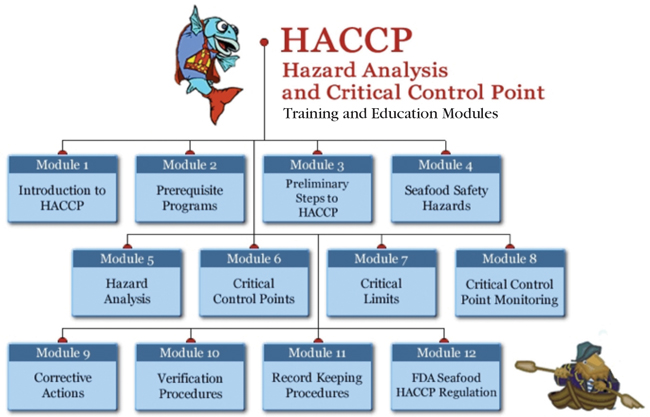
Enhancing Seafood Safety through Hazard Training (pdf)
In 2017, New York Sea Grant facilitated the completion of online Hazard Analysis Critical Control Point food safety training for seafood businesses by some 1,454 individuals from 46 U.S. states, the District of Columbia, Puerto Rico and 11 foreign countries. NYSG developed and manages this online training course for the nation in collaboration with the National Seafood HACCP Alliance to help seafood businesses meet federal and state training requirements. (Photo credit: Michael Ciaramella/NYSG)
Impact statement for projects in New York’s marine district include:
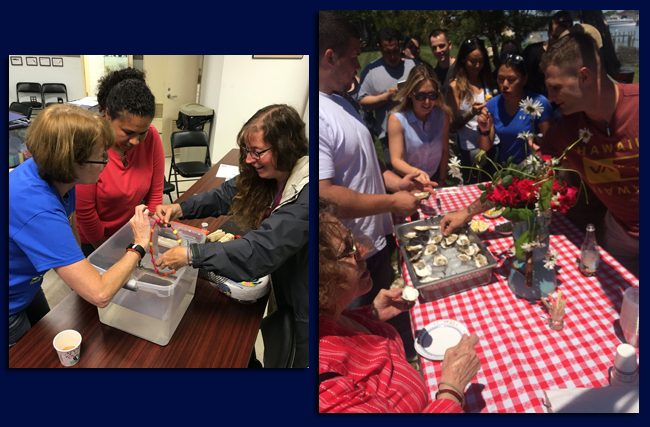
Educating Students & Teachers About Seafood & Aquaculture (pdf)
Due to a lack of formal education programs surrounding seafood science and aquaculture, younger generations are unaware of the opportunities in, and sustainability aspects of, seafood production. To address this need, NYSG developed and conducted a series of workshops that introduce students and teachers from middle school through college to sustainable seafood practices and production. (Photo credits: Michael Ciaramella/NYSG)
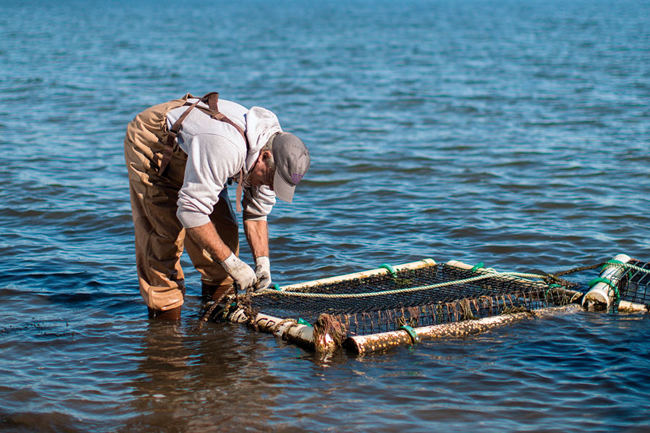
Helping Investors Make Well-Informed Shellfish Farming Decisions (pdf)
NYSG has a successful track record developing educational resources to assist stakeholders interested in marine-related economic development opportunities. Most recently, NYSG created resources to enable investors to make better business decisions about starting a shellfish farming enterprise, which is one of the few options available for individuals to establish a marine business in New York. (Photo credit: NYSG)
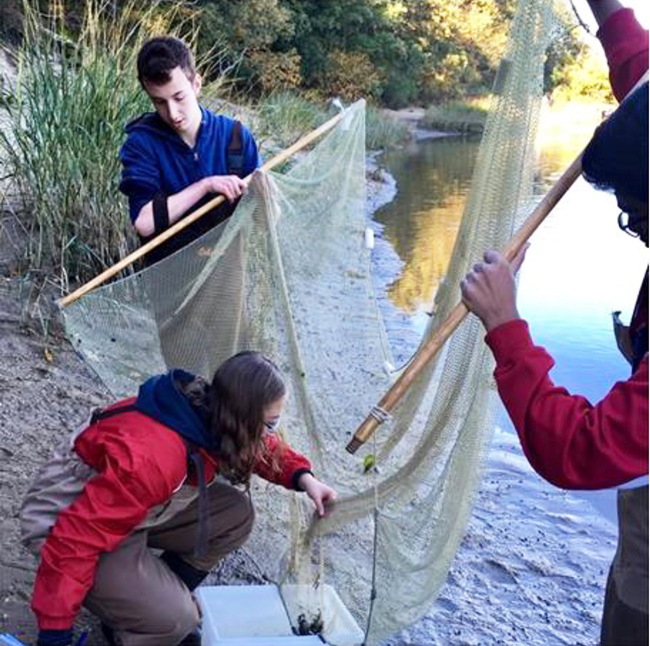
Long Island Sound Stewards: Student Education Encourages Coastal Conservation (pdf)
Since 2008, more than 4,000 students have been involved in Long Island Sound Study projects. Their efforts have included collecting significant data of use to partner agencies. More than 10 years of data now exists from projects conducted at Sunken Meadow State Park, in the Nissequogue River Stewardship Area. (Photo credit: Anna Weshner-Dunning/NYSG-LISS)
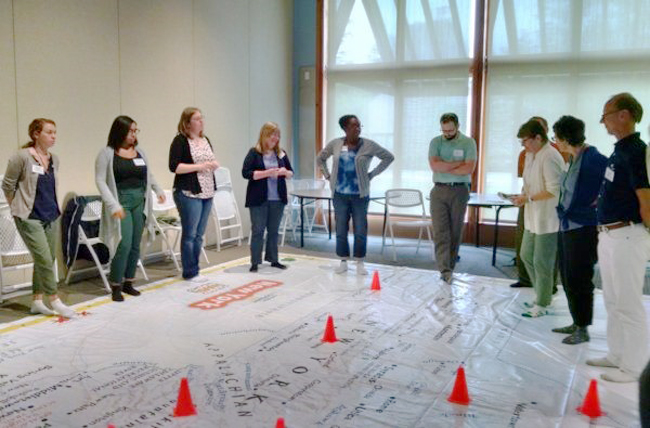
Coastal Education with New York Giant Traveling Map (pdf)
Although there are high tech coastal education resources aplenty, the ability to use a map is still a vital skill, and map-making is a viable career field. NYSG is making new resources available to teachers and students to facilitate student learning about map symbols, scale, orientation and grids that are also the basic components of Geographic Information Systems. (Photo credit: Cornell Institute for Resource Information Sciences)
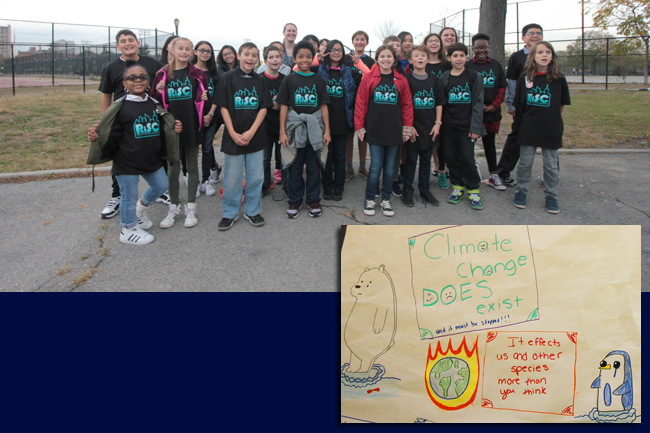
Empowering Resilient Schools for New York City (pdf)
Climate change poses significant risks to New York City’s communities and infrastructure, including schools. During 2017, NYSG worked with NYC-based educational partners to launch a novel environmental literacy program called the Resilient Schools Consortium. (Photo credits: National Wildlife Federation; Rachel Carson High School)
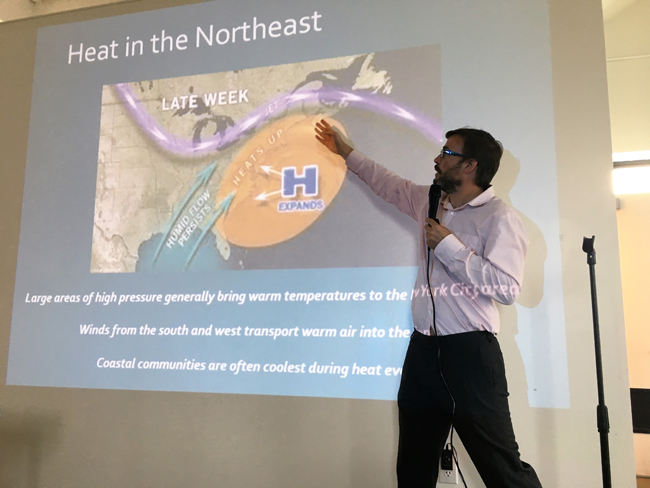
Raising Climate Awareness for New York City Coastal Communities (pdf)
To date, four Climate Forums - each of which bring relevant, useful information to communities versus asking them to find the experts - have drawn participation from more than 20 communities. Forums have been hosted in Brighton Beach, Canarsie, Coney Island and Far Rockaway. (Photo credit: Jessica Fain, Science and Resilience Institute at Jamaica Bay)
Impact statement for projects in New York’s Great Lakes district include:
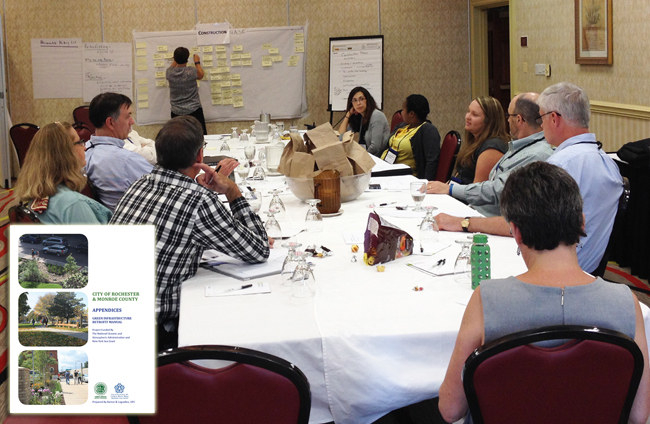
Facilitating Green Infrastructure for NY Coastal Communities (pdf)
Although there are state standards for the development of green infrastructure (GI), communities in New York State have lacked local guidance specifically focused on retrofits. That is until 2017, when NYSG partnered to gather stakeholder input for the development of a locally-focused GI retrofit manual. (Photo credit: Mary Austerman/NYSG)
View the green infrastructure manual at: www.nyseagrant.org/ccd > Resources > Tools.
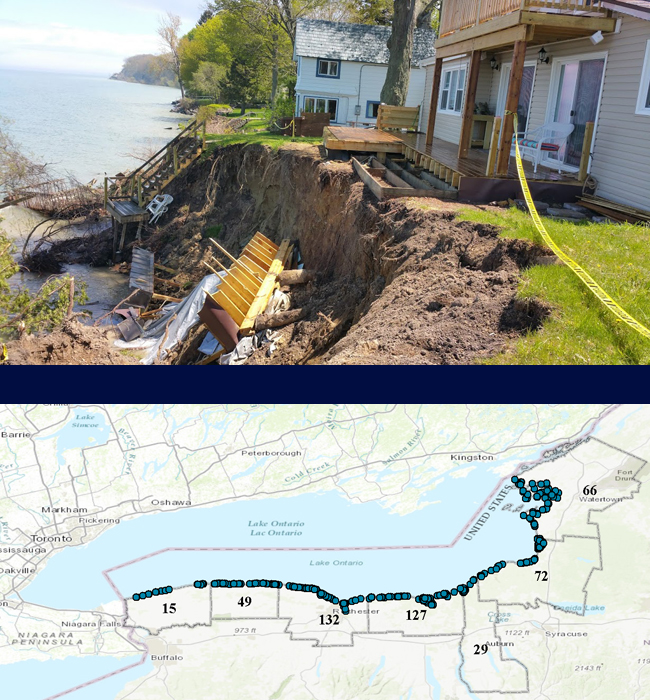
Responding to Stakeholders’ Request for Standardized Impact Data Reporting (pdf)
New York’s Lake Ontario region saw unprecedented high water levels in 2017. NYSG responded to stakeholder requests for a standardized means of reporting the water level damages on waterfront properties by developing and conducting an online survey with the goals of documenting the parcel-level impacts of the event on waterfront properties, providing municipalities with information to assist community-based planning to reduce flood risks; and verifying existing flood risk modeling. (Photo/Map credit: Coastal Flooding Survey Project, Cornell University and NYSG)
NYSG High Water Photos & Data Summary: www.nyseagrant.org/waterlevel2017
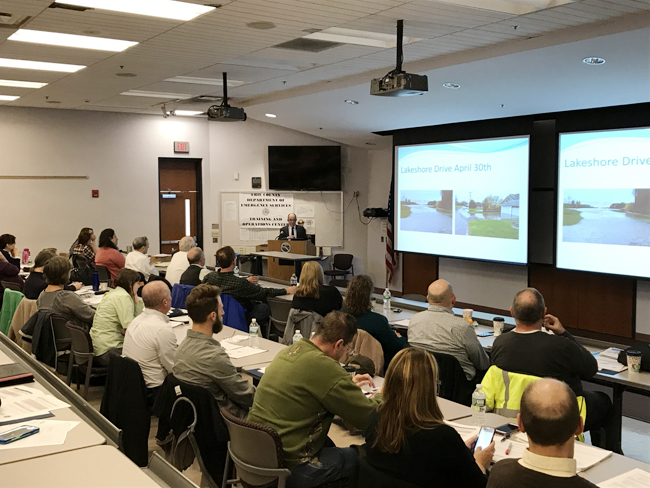
Coastal Threat Resiliency Training for Municipal Staff (pdf)
In 2017, NYSG and partners began providing municipal staff with training on localized severe weather and climate change impacts as well as tools, resources and programs that can be used to identify and address vulnerabilities and increase community resiliency to those impacts. (Photo credit: Mary Austerman/NYSG)
Learn more about NYSG resiliency training: www.nyseagrant.org/ccd > Resources > Workshops
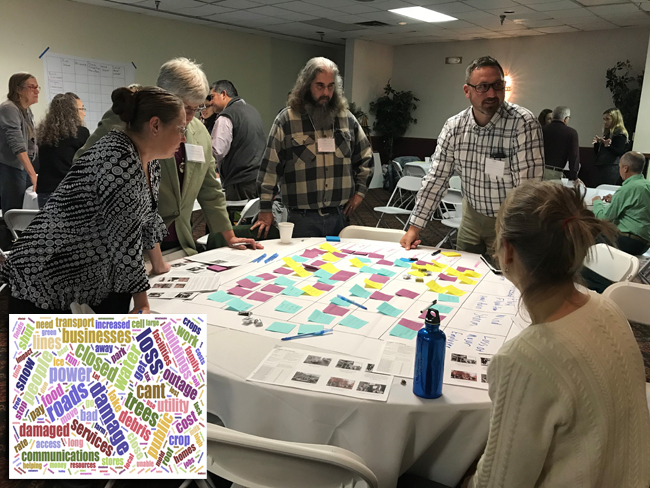
Utilizing Scenario Building to Assess Future Vulnerabilities (pdf)
Many New York communities do not plan for extreme events, but rather react to them after the events occur. Scenario building exercises such as this one, which NYSG co-facilitated, are a way for communities to begin thinking through their resiliency to local threats and identifying community vulnerabilities. (Photo credits: Mary Austerman/NYSG; Environmental Finance Center)

Preparing Teachers to Engage Students in Great Lakes Education (pdf)
In NYSG-led professional development workshops in 2017, teachers from coastal counties across the state learned about aquatic science, Great Lakes stewardship, and STEM (science, technology, engineering and math) topics. In this year, NYSG continued its commitment to educating the next generations of Great Lakes citizens by working with more than 125 teachers and 15,000 students. (Photo credit: Helen Domske/NYSG)
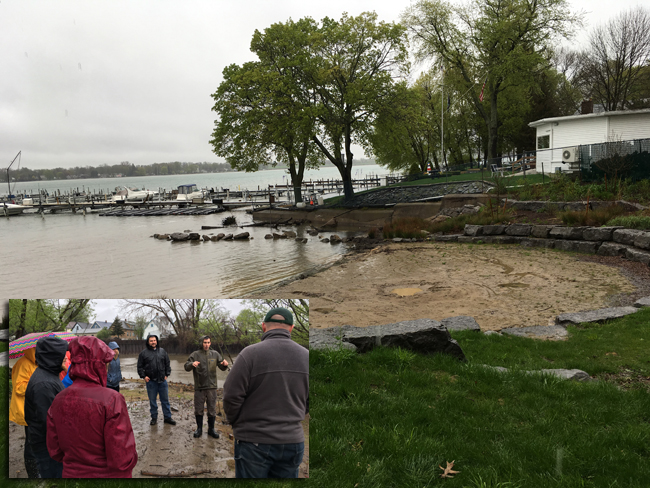
Improving Coastal Restoration Via Shoreline Processes & Management Training (pdf)
NYSG equips stakeholders, agency representatives and engineers with a variety of tools that help to improve their coastal restoration efforts, from educating on the challenges faced with nature-based shoreline techniques and designing a decision-making framework for nature-based features, to providing methods on how to approach restoration design for shorelines and coastal habitats, as well as overviews of federal state and regional permitting processes. (Photo credits: Helen Domske/NYSG)
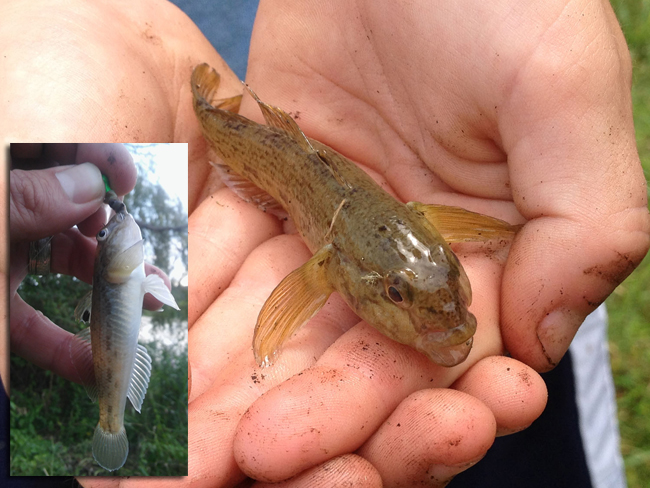
Improving Invasive Round Goby Monitoring (pdf)
As seen in NYSG's related education-based activities, which include teaching a graduate level course, monitoring and understanding invasive round goby is crucial due to their impact on native fishes, predator-prey interactions and energy movement within the Great Lakes that support a multi-billion dollar fishing industry and numerous businesses and communities. (Photo credits: Jesse Lepak, Brittney Rogers/NYSG)
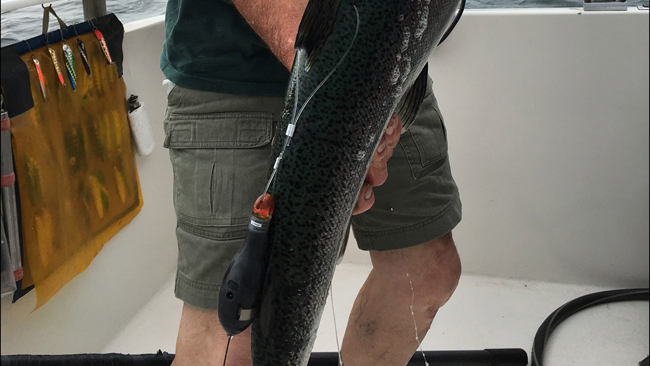
Tracking King Salmon in Lake Ontario with Pop-Off Satellite Tags (pdf)
Characterizing the movement and behavior of king salmon - through research as well related extension efforts such as a informative video - is valuable information that can be used by scientists, biologists, and anglers to enhance understanding of fish behavior to support fisheries management, and to locate and catch king salmon more efficiently. (Photo credit: Dr. James Watkins/Cornell University)
Watch NYSG's King Salmon video: https://youtu.be/pb4wJQc-O7A
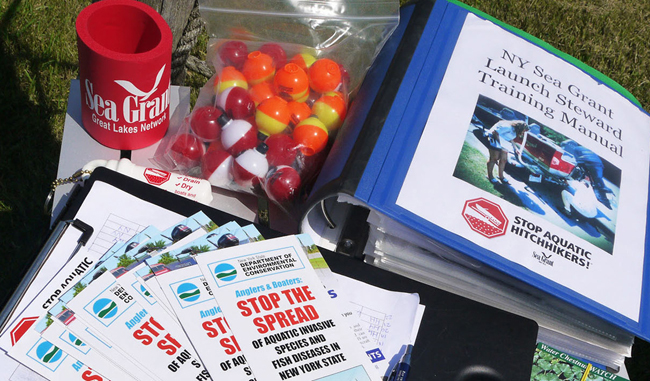
Watercraft Inspection Webinar Series Empowers Statewide Efficiency (pdf)
NYSG continued its watercraft inspection program educational webinar series, initiated in 2015, to bring regional experts and inspection program leaders together to share information and discuss ways to collaboratively standardize programs and advance invasive species prevention across New York State. There were 390 registrants representing local, state, regional and federal entities from 17 states across the five webinars conducted in 2017. (Photo credit: NYSG)
For more, see www.nyseagrant.org/watercraftinspection.
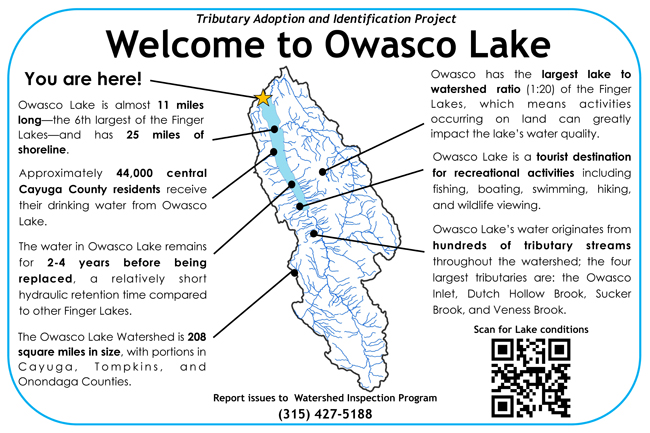
NY’s Great Lakes Basin Small Grants: Advancing Ecosystem-Based Management (pdf)
NYSG partners with the New York State Department of Environmental Conservation (NYSDEC) on the "New York Great Lakes Basin Small Grants Program," which supports stakeholder-driven efforts to restore and revitalize the state’s Great Lakes region and demonstrate successful application of ecosystem-based management. (Photo credit: Owasco Lake Inspection Program)
More Info: New York Sea Grant
New York Sea Grant (NYSG), a cooperative program of Cornell University
and the State University of New York (SUNY), is one of 33 university-based
programs under the National Oceanic and Atmospheric Administration’s
National Sea Grant College Program.
Since 1971, NYSG has represented a statewide network of integrated
research, education and extension services promoting coastal community
economic vitality, environmental sustainability and citizen awareness
and understanding about the State’s marine and Great Lakes resources.
Through NYSG’s efforts, the combined talents of university scientists
and extension specialists help develop and transfer science-based
information to many coastal user groups—businesses and industries,
federal, state and local government decision-makers and agency managers,
educators, the media and the interested public.
The program maintains Great Lakes offices at Cornell University, SUNY
Buffalo, SUNY Oswego and the Wayne County Cooperative Extension office
in Newark. In the State's marine waters, NYSG has offices at Stony Brook
University in Long Island, Brooklyn College and Cornell Cooperative
Extension in NYC and Kingston in the Hudson Valley.
For updates on Sea Grant activities: www.nyseagrant.org has RSS, Facebook, Twitter, and YouTube links. NYSG produces a monthly e-newsletter, "NOAA Sea Grant's Social Media Review," via its blog, www.nyseagrant.org/blog. Our program also offers a free e-list sign up via www.nyseagrant.org/coastlines for its flagship publication, NY Coastlines/Currents, which is published quarterly.